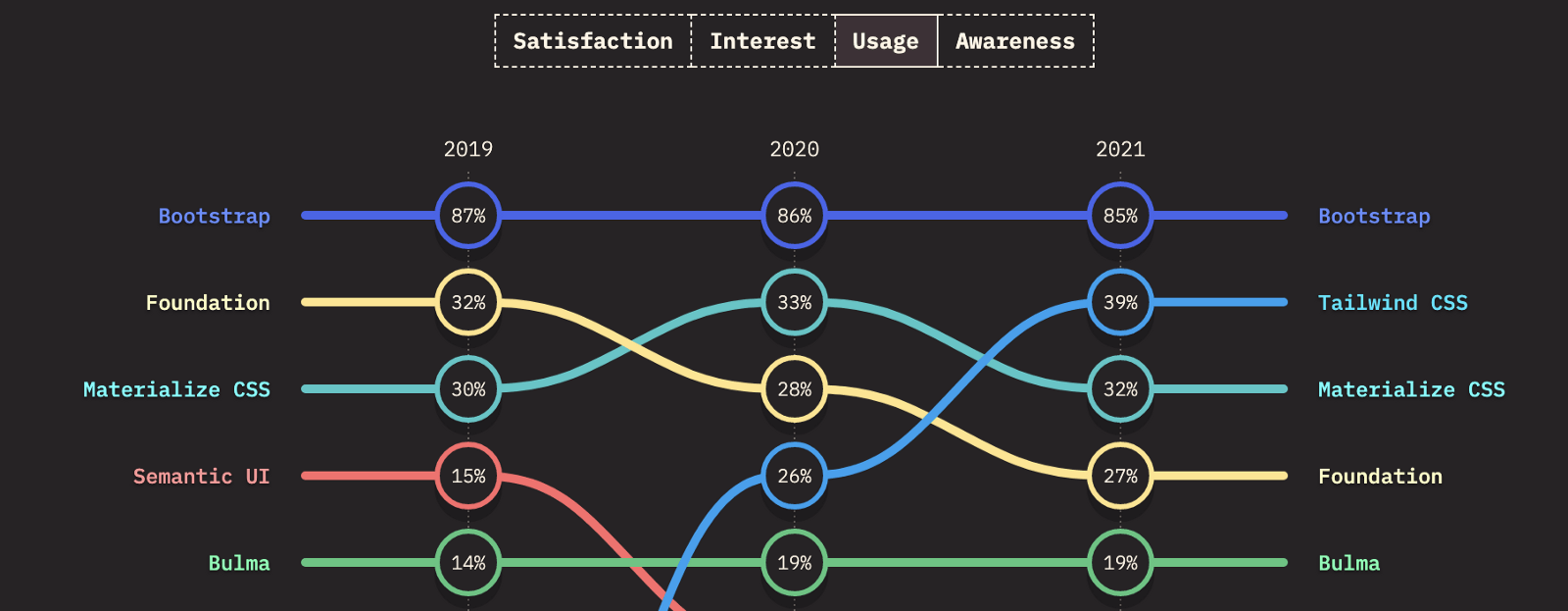Unveiling the Secrets of Ghosted Domains
Explore the intriguing world of expired domains and online opportunities.
Frameworks that make your CSS life a breeze
Discover the top CSS frameworks that simplify your design process and boost productivity—your CSS journey just got easier!
Top 5 CSS Frameworks to Streamline Your Web Design Process
When it comes to modern web design, utilizing a CSS framework can dramatically enhance your workflow. CSS frameworks offer a structured way to develop responsive, consistent, and visually appealing websites while saving you time and effort. Among the vast selection of frameworks available, five stand out for their features and community support. Here, we present the Top 5 CSS Frameworks to streamline your web design process:
- Bootstrap: A pioneer in the realm of CSS frameworks, Bootstrap is known for its grid system and responsive design capabilities, making it ideal for projects of all sizes.
- Foundation: Developed by ZURB, Foundation is highly customizable and suitable for complex, large-scale applications due to its modular approach.
- Bulma: A modern CSS framework based on Flexbox, Bulma's simplicity and responsiveness have made it a favorite among developers who prefer a cleaner design.
- Tailwind CSS: Tailwind sets itself apart with its utility-first approach, allowing developers to create designs directly in their markup without leaving the HTML.
- Materialize: Rooted in Google’s Material Design, Materialize offers a comprehensive collection of components and animations that are perfect for creating visually stunning interfaces.

How CSS Frameworks Boost Your Development Speed and Efficiency
In today's fast-paced web development landscape, CSS frameworks have emerged as powerful tools that significantly enhance both development speed and efficiency. By providing pre-written styles and components, these frameworks allow developers to avoid the redundancy of writing CSS from scratch. Popular frameworks like Bootstrap, Foundation, and Tailwind CSS come with extensive libraries of responsive grids, buttons, forms, and navigation elements that can be easily tailored to fit any project. This not only saves time but also ensures consistency across different pages, leading to a more organized and cohesive design.
Additionally, CSS frameworks often come with built-in support for best practices in web design, such as mobile-first design principles and accessibility features. Developers can leverage these tools to create visually appealing websites that meet modern standards with minimal effort. By streamlining the development process, CSS frameworks enable teams to focus more on creative elements and less on routine coding tasks. As a result, projects can be completed faster, allowing for quicker deployment and the ability to adapt to feedback and changes with ease.
Are CSS Frameworks Worth the Hype? A Deep Dive into Their Benefits
The rise of CSS frameworks like Bootstrap, Tailwind CSS, and Foundation has sparked a debate in the web development community: are they truly worth the hype? Many developers swear by these frameworks for their ability to streamline the design process and provide a solid foundation for responsive layouts. By utilizing a framework, developers can leverage pre-written CSS rules and components, minimizing redundancy and significantly reducing development time. These frameworks not only enhance productivity but also ensure consistency in design across multiple pages, making them an invaluable tool for teams managing large-scale projects.
Moreover, CSS frameworks come equipped with a plethora of features that cater to modern web design needs. For instance, their built-in grid systems simplify the navigation of complex layouts, while components like modals and carousels can be easily integrated without needing to write extensive custom CSS. Additionally, frameworks often boast strong community support, with extensive documentation and resources that can help both novice and experienced developers troubleshoot issues swiftly. Ultimately, while CSS frameworks may not be necessary for every project, their benefits in terms of efficiency, scalability, and ease of use make them a worthy consideration in the evolving landscape of web development.